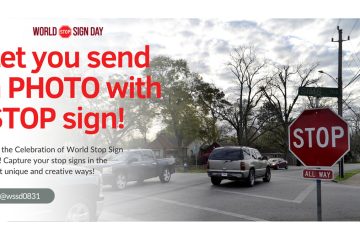Table of Contents
Stop signs are a ubiquitous feature of our roads, serving as a crucial reminder for drivers to come to a complete stop at intersections. But have you ever wondered about the history behind this iconic red octagon? Let’s embark on a journey through time to uncover the fascinating story of the stop sign.
History of Stop Sign: Early Experimental Signs and Rules
The precursors to modern stop signs can be traced back to the late 19th century in London. These early signs were green in color and featured the words “GO” and “STOP” to indicate intersections. The first true stop sign was installed in Detroit, Michigan, in 1915. These signs were initially yellow with black lettering to enhance visibility.
Standardization and the Emergence of the Red Octagon
As stop signs gained wider adoption across the United States in the 1920s and 1930s, the lack of uniformity posed a challenge. Signs varied in size, shape, and color, leading to confusion among drivers.
In the late 1930s, the U.S. Department of Transportation (USDOT) spearheaded an initiative to standardize stop signs. The goal was to create a clear and easily recognizable signal for drivers to stop at intersections.
In 1935, the Uniform Vehicle Code (UVC) addressed stop signs for the first time, but it did not yet mandate the red octagon shape.
After extensive deliberations, the modern stop sign was born in 1942: a red octagon with the white inscription “STOP.” The red color was chosen to signify danger and the need to stop, while the octagonal shape distinguished it from other traffic signs.
The 1954 Uniform Vehicle Code officially codified the red octagon stop sign as the standard for use across the United States.
Global Spread of the Stop Sign
The effectiveness and simplicity of the stop sign soon gained recognition worldwide. In the 1960s and 1970s, the red octagon stop sign gradually spread across Europe, Asia, and Africa. Today, it is used in most countries around the globe to indicate the need for vehicles to stop at intersections.
Key Milestones:
- Early 1900s: Experimental square signs with “Stop” written on them are introduced in the USA.
- 1914: August 31: Michigan becomes the first state to adopt the octagonal stop sign as an official traffic signal.
- 1922: November 15: The American Association of State Highway Officials (AASHO) standardizes the stop sign, defining its size, color, and shape.
- 1935: January 1: The UVC addresses stop signs for the first time, recommending the use of red with a white background and the word “STOP.”
- 1942: August 1: The modern red octagon stop sign with white lettering is officially adopted in the USA.
- 1954: The red octagon stop sign becomes the standard for the USA in the Uniform Vehicle Code.
- 1949: September 19: The United Nations (UN) Geneva Convention on Road Traffic adopts the red octagon stop sign as an international standard, further promoting its global use.
Important Figures
- William Phelps Eno: An American engineer and urban planner who advocated for the use of “Stop” signs in the early 1900s. His work laid the foundation for the concept of the stop sign.
- Carl Breer: A member of the AASHO committee who played a crucial role in standardizing the octagonal stop sign in 1922. Breer’s engineering expertise and commitment to traffic safety helped shape the stop sign as we know it today.
Continuous Evolution
It’s important to note that the stop sign’s evolution has been ongoing, with refinements to its design and usage continuously being made to enhance road safety. For instance, some countries incorporate additional text or symbols on their stop signs to make them even more explicit for drivers. As technology advances in the modern world, stop signs may also evolve, potentially incorporating features like embedded lights or intelligent systems to improve visibility and effectiveness.
The red octagon stands as a simple yet powerful symbol of safe driving. The history of the stop sign serves as a testament to how traffic regulations can be developed to protect the lives of people and improve the flow of traffic.

